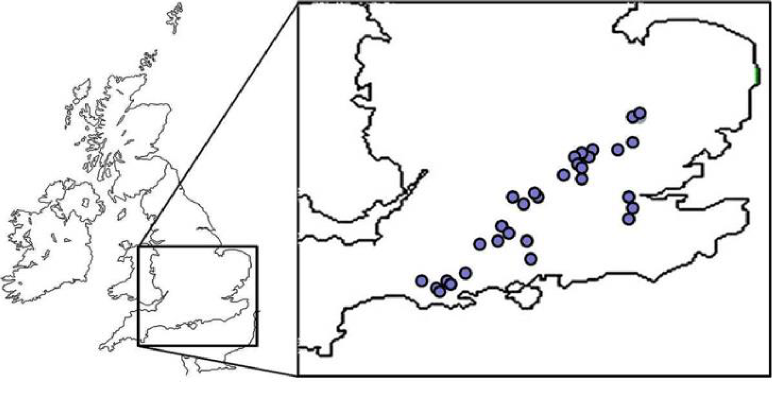Chalk
The discovery of methane-derived carbon use by organisms in the Lambourn (Trimmer et al 2009) led to questions about the extent of this phenomenon in other rivers. While previously reported as widespread in stratifying lakes , the occurrence of such a subsidy in well-oxygenated chalk streams is novel. Several other chalk streams are being studied by Sarah Tuffin as part of her PhD to investigate the prevalence of methane-derived carbon in these iconic rivers.
Streams were sampled in the south of England (see map ) to find a range of methane concentrations. Sampling was conducted on two occasions: during winter reflecting the baseline methane concentration of the river water, and governed principally by groundwater inflow; and summer when concentrations typically peak because of in-stream methanogenesis.
The methane concentration of river water, the methane oxidising capacity of the stream surface gravels, and the main food web components were all analysed. Food web sampling included basal resources of epilithon, terrestrial leaf litter and the dominant aquatic macrophyte which is usually Ranunculus. Primary consumers such as Gammarus, Agapetus spp., and limpets and snails were also collected.
Stable isotope analysis was conducted using Continuous Flow Isotope Ratio Mass Spectrometry. Methane concentration and oxidation potential are measured using GC-FID and laboratory incubations.
Initial results from the survey show a range of methane concentrations in stream water from approximately 30 nmol L-1 to 400 nmol L-1. The oxidation of methane by biofilms on gravels is widespread, as is the incorporation of methane-derived carbon by Agapetus spp. Work is ongoing to explore the factors controlling the degree of methane subsidy.







